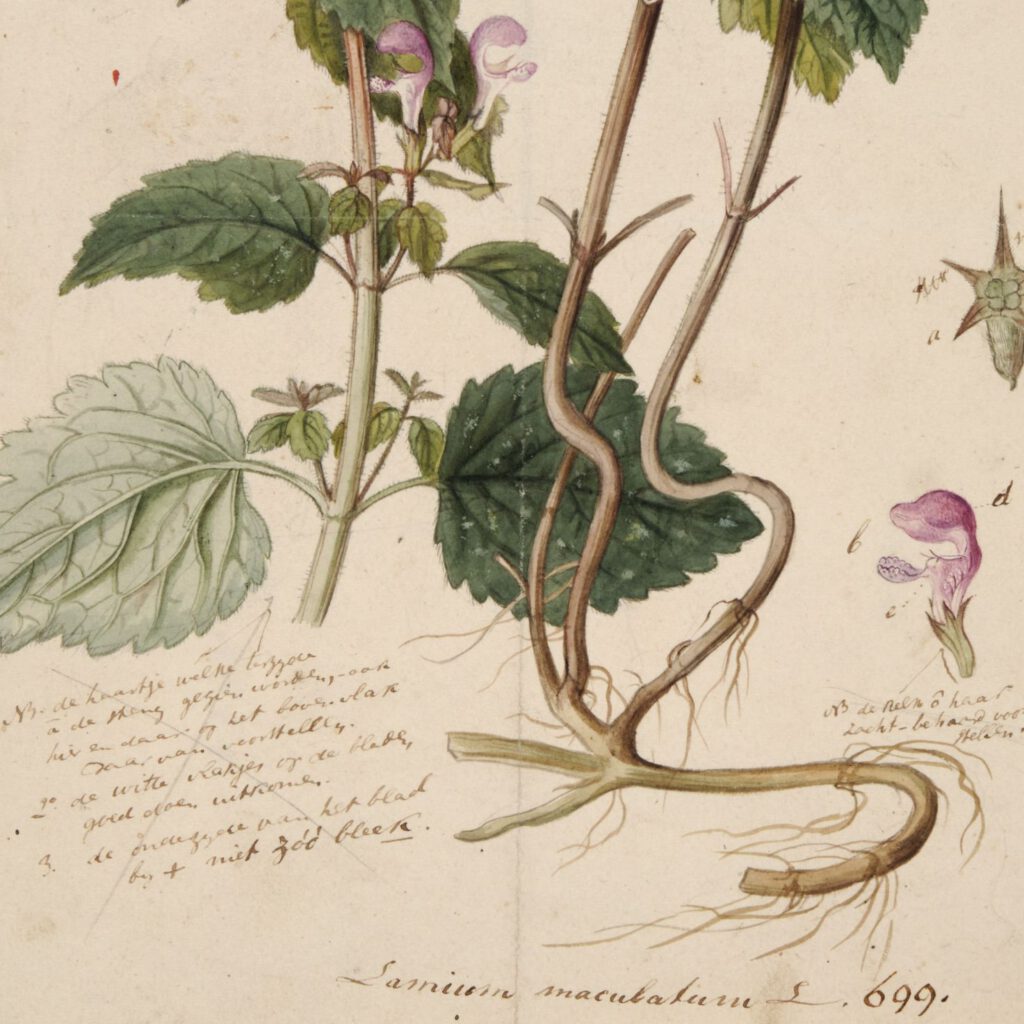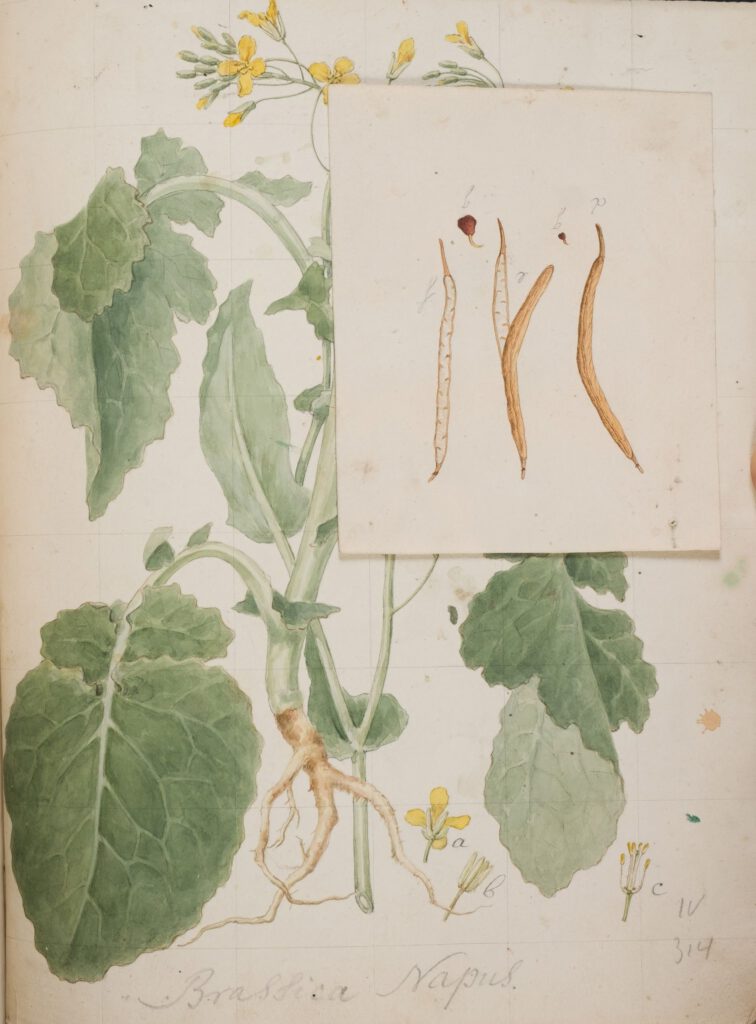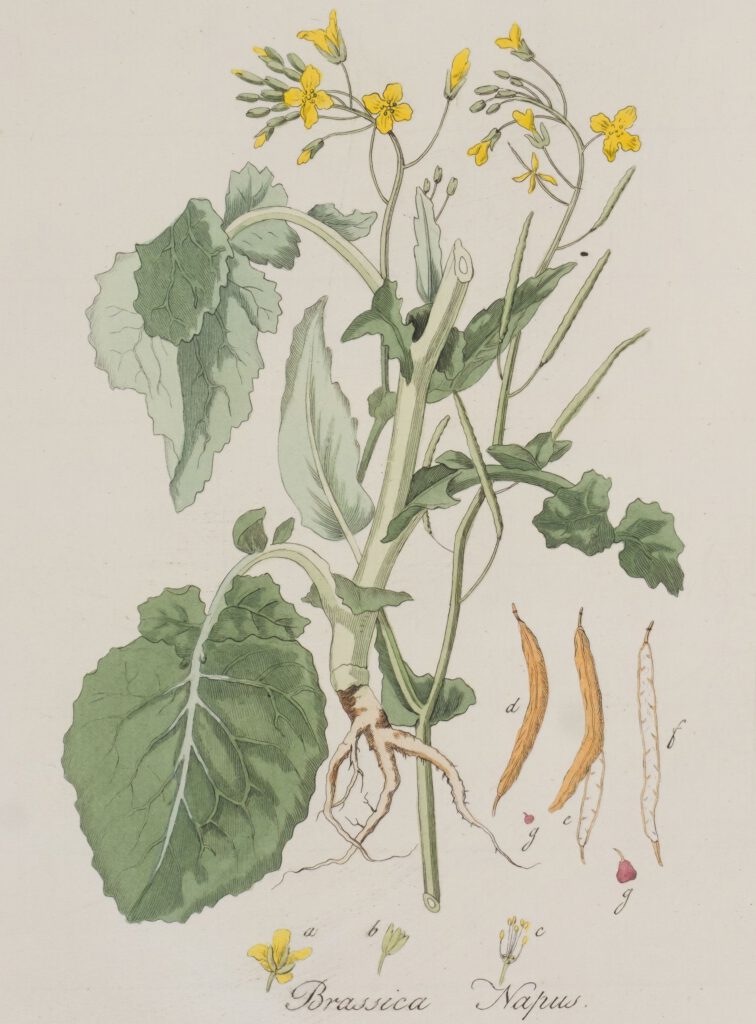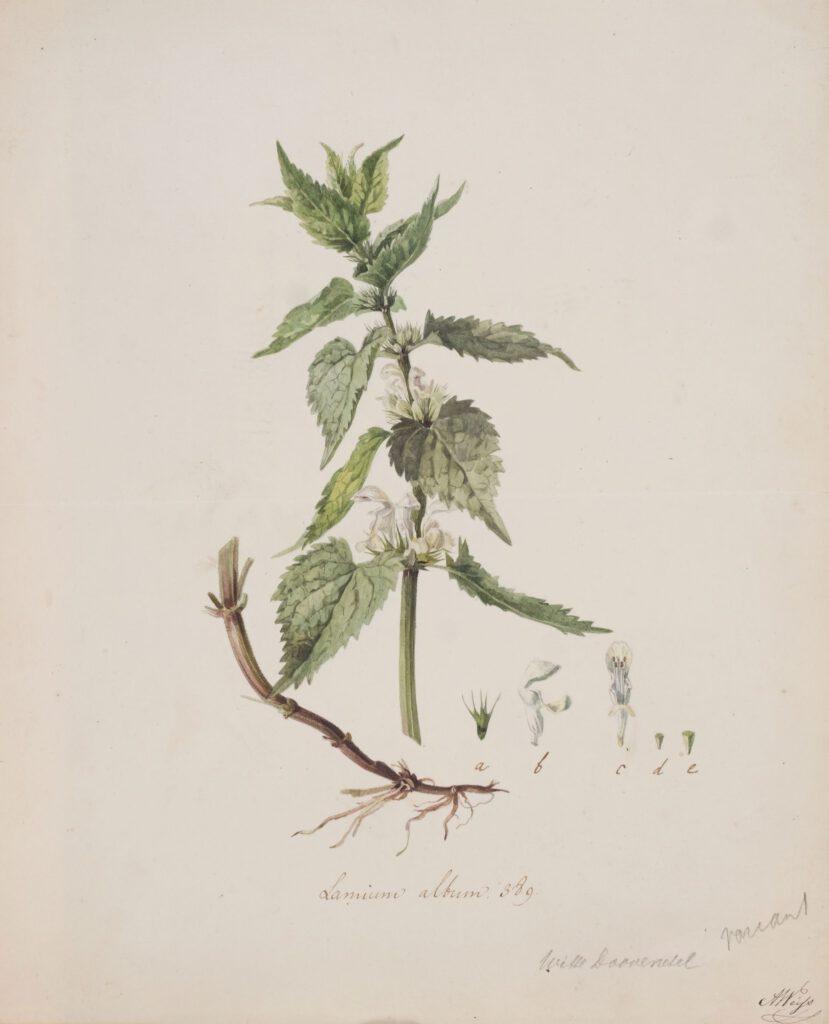The drawings

The first 40 drawings for the Flora Batava were copied from the Flora Londinensis (William Curtis). Thereafter, the plants (specimens) were collected in the Netherlands and depicted by artists from life. This could be a long process because the drawings depict the plant parts from different life stages (e.g. the seeds, the flowers). This meant that the artist had to capture a specimen at several moments in its life cycle.
Many artists contributed to the Flora Batava. Because the engravings in the Flora Batava are not signed, the identity of the artists is not always known. Some editions of the Flora, however, list some artists in the editorial preface while other artists are known because they signed their original drawings.
Artists who are known to have contributed to the Flora Batava include G.J. van Oss, C.J. van Hulstijn, Ms. La Chapelle, H.C. van de Pavord Smits and A. Weiss.
Anton Weiss (1801-1851) and Greorgius Jacobus Johannes van Os (1782-1861) are also known for their flower still lifes. The contribution of Helena Christina van de Pavord Smits (1867-1941) to the Flora Batava is impressive. She made all the drawings, nearly 800, for the last 10 volumes.


Once the artists finished the drawings, they sent them to the editor, who checked them and provided comments for the engraver, if necessary. Occasionally, the editor provided minor comments but sometimes he demanded a new drawing. In these cases, the old drawing was not destroyed but kept.
After editing, the editor forwarded the illustrations to the printer, where they were engraved. After printing, first as a copper engraving, later as a stone lithograph, the engravings were then manually coloured, using the original drawings as an example. The engravings were hand coloured until the 24th volume. The last four volumes were illustrated with chromolithographs.


Original drawings of plate 389, two varieties, Lamium album (white dead-nettle). The drawing on the right, made by Anton Weiss, was used as example for the print.
The original drawings offer a wealth of information. For example, some plant species were drawn several times and we assume by different illustrators most likely because the initial drawing did not meet the editorial requirements. Some of the original drawings include editorial comments, whilst others are signed, revealing the artists who contributed them to the Flora Batava.